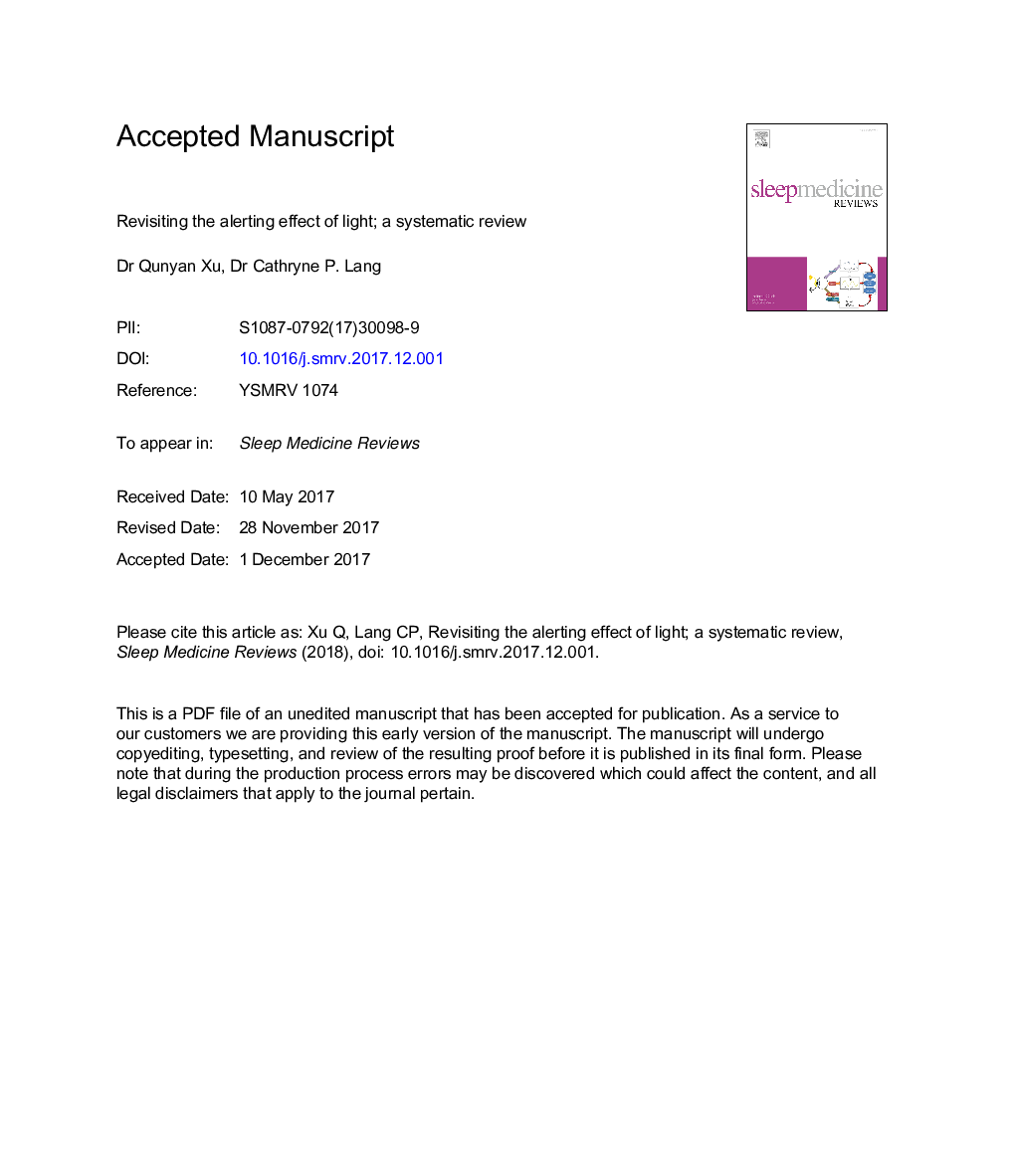| Article ID | Journal | Published Year | Pages | File Type |
|---|---|---|---|---|
| 8963408 | Sleep Medicine Reviews | 2018 | 59 Pages |
Abstract
Light plays an essential role in maintaining alertness levels. Like other non-image-forming responses, the alerting effect of light is influenced by its spectral wavelength, duration and intensity. Alertness levels are also dependent on circadian rhythm (process C) and homeostatic sleep pressure (process S), consistent with the classic two-process model of sleep regulation. Over the last decade, there has been increasing recognition of an additional process (referred to as the third process) in sleep regulation. This third process seems to receive sensory inputs from body systems such as digestion, and is usually synchronised with process C and process S. Previous studies on the alerting effect of light have been mostly conducted in laboratories. Although these studies are helpful in delineating the impact of process C and process S, their ability to assist in understanding the third process is limited. This systematic review investigated the factors that influence the alerting effect of light by examining randomised controlled trials and randomised or counterbalanced crossover studies. Factors that influence light's alerting effect were examined with reference to the three-process model. The post-illuminance alerting effect was examined separately due to its potential to offer flexible workplace-based light interventions to increase or maintain employees' alertness.
Related Topics
Life Sciences
Neuroscience
Neurology
Authors
Qunyan Xu, Cathryne P. Lang,
